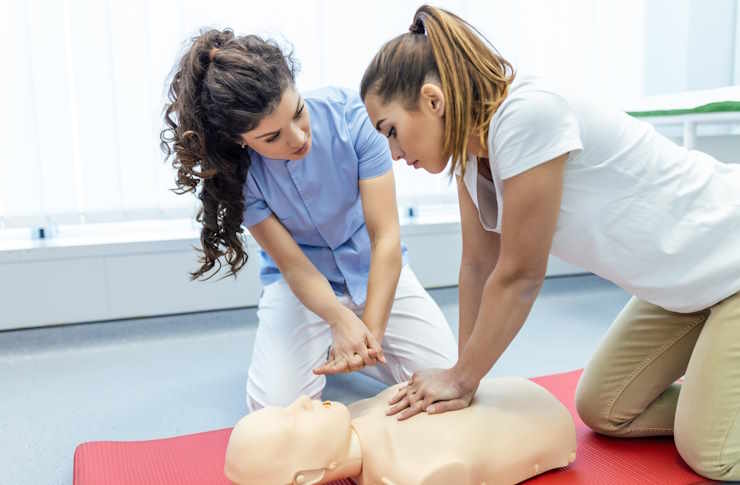Medical Assistant Training: Complete Career Guide 2025
Explore a step-by-step guide to medical assistant training and discover how to launch a healthcare support career. This in-depth overview covers program lengths, entry requirements, where to study, core clinical and administrative skills, and job outlook. Learn about certification options, internship opportunities, and potential starting salaries to make an informed decision about pursuing medical assistant training in the healthcare field.

Medical assistant training opens the door to a hands-on, patient-focused role in healthcare. Whether you want to work behind the front desk or in clinical support, training programs give you the practical skills and workplace knowledge employers seek. This guide breaks down timelines, entry requirements, training locations, key competencies learned, and career prospects so you can choose the right path.
Typical Program Lengths
Program durations vary by credential and school. Short certificate programs commonly take about 9 to 12 months to finish, while diploma options may run 12 to 18 months. An associate degree usually requires 18 to 24 months of study. For learners wanting a faster route, some accelerated tracks condense coursework and clinical experience into as little as six months, though these tend to be intensive and demand a heavier workload.
Educational Requirements and Admissions
Most programs expect applicants to hold a high school diploma or an equivalent credential. Some institutions ask for basic prerequisites, such as introductory math and science classes or placement test results. While a formal credential may not be required in every state to work as a medical assistant, many employers prefer candidates who completed an accredited program or hold certification, so finishing an approved training course improves job prospects.
Where You Can Train
Medical assistant education is offered by a range of providers: community colleges, vocational and technical schools, and career colleges are common choices. Certain hospitals and larger healthcare systems also deliver on-the-job training or employer-sponsored apprenticeship programs. When comparing options, evaluate accreditation status, curriculum balance between clinical and administrative training, instructor credentials, and whether the program includes supervised clinical internships or externships.
Core Skills and Competencies Taught
Training programs blend clinical procedures with administrative responsibilities to prepare you for diverse duties in a medical setting. Typical clinical skills taught include taking and recording vital signs, performing basic phlebotomy and injections, preparing patients for exams, and assisting with minor procedures. Administrative instruction usually covers appointment scheduling, electronic medical record management, medical billing and coding basics, and handling insurance forms.
Equally important are communication skills, professionalism, and patient privacy practices. Programs emphasize bedside manner, clear documentation, interdisciplinary teamwork, and ethical standards that help you interact respectfully with patients and coordinate effectively with nurses, physicians, and office staff.
Certification and Licensure Considerations
Certification is not uniformly required nationwide, but many employers prefer certified medical assistants. National credentials from organizations such as the American Association of Medical Assistants (AAMA) or other certifying bodies can increase competitiveness. Always check state-specific regulations, because certain states may restrict particular clinical tasks to licensed personnel.
Employment Settings and Career Paths
Graduates find work in a variety of healthcare environments, including physicians’ offices, hospitals, urgent care centers, outpatient clinics, and long-term care facilities. Some choose to specialize in areas like pediatrics, ophthalmology, dermatology, or cardiology, which can open doors to specialized responsibilities and potentially higher pay. With experience, medical assistants may advance into supervisory roles, administrative management, or continue education to enter nursing or other allied health professions.
Job Outlook and Demand
The demand for medical assistants is expected to remain robust. According to the Bureau of Labor Statistics, employment in this occupation is projected to grow by 16 percent from 2021 to 2031, much faster than the average for all occupations. This growth is driven by an aging population and a greater emphasis on preventive care, which increases the need for clinical and administrative support staff.
| Program Type | Duration | Typical Settings | Average Starting Salary |
|---|---|---|---|
| Certificate | 9-12 months | Community Colleges, Vocational Schools | $30,000 - $35,000 |
| Diploma | 12-18 months | Technical Institutes, Career Colleges | $32,000 - $37,000 |
| Associate Degree | 18-24 months | Community Colleges, Universities | $34,000 - $40,000 |
Prices, rates, or cost estimates mentioned in this article are based on the latest available information but may change over time. Independent research is advised before making financial decisions.
This article is for informational purposes only and should not be considered medical advice. Please consult a qualified healthcare professional for personalized guidance and treatment.
Choosing the Right Program and Next Steps
When deciding on a program, look for accredited schools that offer a balanced mix of classroom instruction and hands-on clinical experience. Ask about externship placement rates, job placement support, and whether the curriculum prepares you for national certification exams. Factor in program length, cost, and scheduling flexibility—especially if you need to work while you study.
After completing training, pursue certification if you want to increase your hiring potential. Network with clinical instructors and local healthcare employers, and consider short-term volunteer or part-time roles to gain experience while you search for full-time positions.
Final Thoughts
Medical assistant training is a practical pathway into healthcare, offering varied responsibilities and steady demand. With the right program, you can develop clinical competence and administrative expertise that prepare you for immediate entry into healthcare roles and a foundation for future advancement. Whether you aim for a quick certificate or a broader associate degree, thorough research and targeted training will help you start a rewarding career supporting patient care and practice operations.






